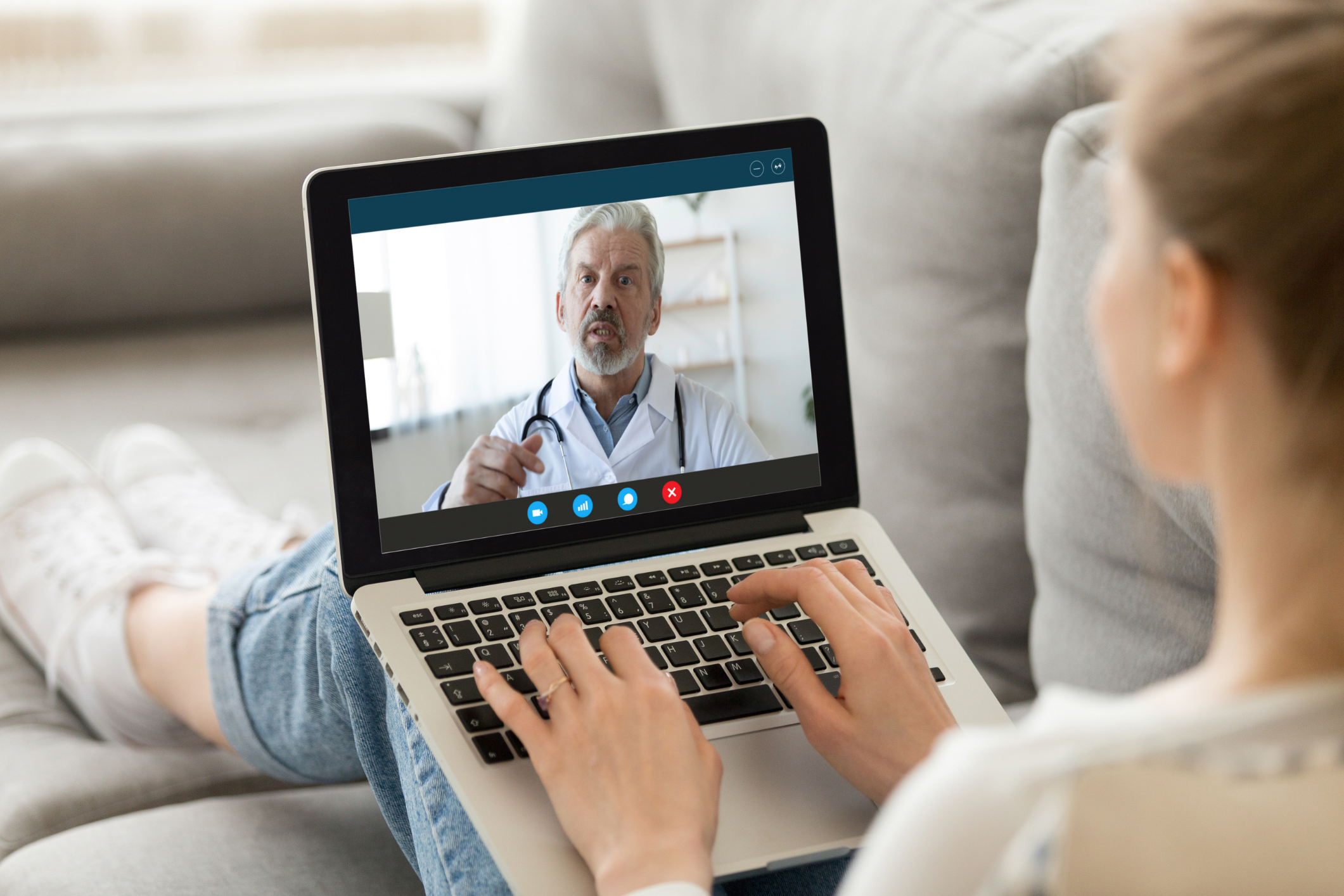By Betia Zeng and Aakanksha Deoli
The growth and expansion of telehealth services have been well documented since the start of the COVID-19 pandemic. Many patients opted to use telehealth to alleviate transportation, time, and convenience barriers. While telehealth visits do not require patients to travel to the physician’s office, patients need some level of “digital literacy” from the patient. Digital literacy, one of the three barriers contributing to a digital divide, disproportionately impacts access to telemedicine for older people, people of color, and people with low socio-economic status.
Digital literacy includes both foundational computer skills and the ability to perform tasks effectively in a digital environment. In preparation for a telehealth visit, patients must connect to the Internet, navigate a website, download the necessary software, and set up their camera, microphone, and speakers. Low digital literacy can prevent successful telehealth visits for the patient. For example, suppose a patient cannot access the videoconference. In that case, they may have to reschedule the appointment, spend time troubleshooting, or attend without video, all of which negatively impact the patient’s experience.
Digital literacy rates across the U.S. population vary by education level, race, employment status, and age. According to the National Center for Education Statistics, adults who are not digitally literate tend to be less educated; in 2018, about 41% of U.S. adults without a high school diploma were not digitally literate, compared to 5% of adults who had a college degree. In addition, those who were not digitally literate were more likely to be Black, Hispanic, or foreign-born. More than three-tenths (35%) of Hispanic adults and two-tenths (22%) of Black adults were not digitally literate, compared to one-tenth (11%) of White adults. In terms of employment status, adults who were not digitally literate tended to work in lower-skilled jobs. Furthermore, previous studies have also reported that comfort in using the Internet and the willingness to use telehealth applications were negatively associated with age.
These disparities in digital literacy across the U.S. have severe implications for telehealth equity, as technology-based solutions are highly susceptible to access and uptake inequalities due to underlying disparities. Reliance on technology for telehealth access means that additional barriers to telehealth exist for digitally illiterate individuals. According to one study, older, non-white patients were less likely to have activated their telehealth portal. Decreased access to telehealth services among people of color will only increase their susceptibility to poor health outcomes.
Several solutions are proposed to improve digital literacy rates. “Digital inclusion” is one method for promoting telehealth equity in health systems; providers and organizations should ensure that all individuals and communities have access to the necessary digital tools and know how to use them. Strategies for digital inclusion include screening for digital needs and telehealth readiness and referring patients to community health workers or digital inclusion programs. Recently, some organizations have offered tools that support broadband access (such as WiFi hotspots) to patients facing affordability barriers. Digital navigators have also been brought on to healthcare teams to evaluate existing digital platforms and assist patients in accessing them.
Awareness programs around telehealth adoption also have the potential to better patients’ experiences with telehealth. In a volunteer initiative in Tennessee, medical students assisted over 5,000 patients in one month in setting up devices for telehealth visits. They helped the patients download the proper software and conveyed expectations for their appointment. Not only did patients improve the necessary computer skills through this initiative, but many became more amenable to using telehealth services.
Another successful attempt to prepare patients for their telehealth visits, especially our elderly population, is through ‘Practice Telehealth Visits.’ Both Iora Health in Boston (now acquired by One Medical) and Oak Street Health in New York witnessed significant success with their real-video visits among elderly patients after instituting ‘mock video visits’ prior to their actual telehealth appointment.
In the larger picture of telehealth equity and healthcare access, digital literacy is an essential factor to consider. While some solutions have provided success in improving digital literacy, there is still a need for healthcare systems and policymakers to address the low digital literacy rates among underserved and vulnerable populations.
- Digital Literacy: Digital literacy is defined as an individual’s ability to search, find, evaluate, and compose clear information through typing, writing, tapping, and by using other mediums (e.g., multimedia videos, video calling, and messaging) on various digital platforms, which requires a basic level of computer competency (Bawden, 2008).
- Digital Divide: The gap in access to and use of the internet and other information technologies between different population groups.
- Digital Inclusion: Activities that ensure that all individuals and communities have access to the internet and other information technologies.
Betia Zeng is an undergraduate student at the Edward J. Bloustein School at Rutgers, The State University of New Jersey.
Aakanksha Deoli, MHA is an Instructor of Teaching and UG Internship Coordinator at Edward J. Bloustein School at Rutgers, The State University of New Jersey.

